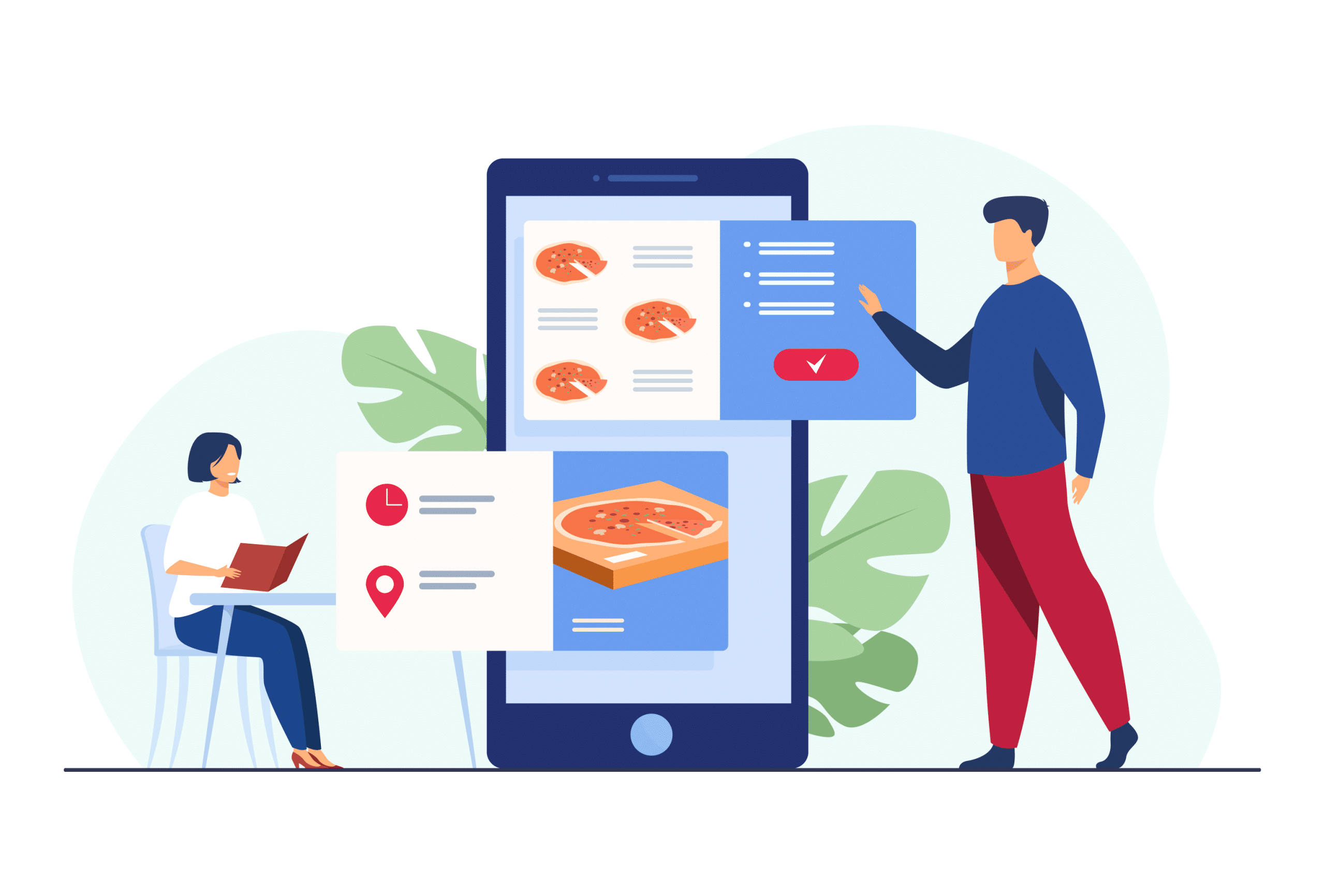Hi there folks!
Looks like you’re interested in how to create a grocery delivery application. Here we go.
This guide is designed to help startup founders, product managers, and serial entrepreneurs to find out all the details of a custom grocery delivery app development.
You’ll learn about:
- Why now is a good time in the market to launch a new grocery delivery app,
- How much it costs to develop a grocery delivery app,
- What the steps to develop a grocery delivery app are,
- A checklist to find and choose a technical partner,
- And more!
Without further ado, let’s start with the definition of a grocery delivery app, and how it differs from similar apps.
If you prefer visual to text, then go straight to the bonus infographic “How to make a grocery delivery app”.
What Is a Grocery Delivery Mobile App?
A grocery delivery application is an app that allows users to order their groceries online. The app owners are responsible for facilitating the grocery delivery to users’ homes according to their terms and conditions.
Most grocery apps are subscription-based, meaning that users have to pay monthly fees or annual fees in addition to the price of groceries on the platform.
As a startup, you have the option of creating different types of grocery delivery apps. The two most prominent applications are:
- Aggregators
- Marketplaces
Aggregators
Aggregators are apps that basically list nearby grocery stores to platform users. Aggregators usually include stores like Walmart and other major grocery chains. How do applications based on this model work?
- The platform user can then choose from the list of stores shown.
- Users can add their grocery choices in the cart on the app from the online menu.
- They check out the cart and make payments.
- Upon confirmation of the order, the user can track the order in real-time till they receive the items.
The responsibility to make the delivery solely lies with store owners or the app’s delivery team.
The intricate workings of such apps depend on the partnership between store owners and the startup.
Marketplaces
Marketplace grocery apps are somewhat similar to aggregators. However, they differ in their core mode of functioning.
This grocery app allows merchants nearby to display their groceries while customers contact them via the platform. It serves as a medium of contact between buyers and sellers.
For marketplaces, the startup must have a mechanism to facilitate communication between merchants and app users.
When Is the Best Time for Online Grocery Delivery App Development?
Thinking about the best time to create a grocery delivery app? Well, now is the best time to have one as an entrepreneurial endeavor.
According to data from AppTopia, owning a grocery delivery product is a very profitable move. And two major factors make now the best time to have a grocery delivery application.
The First Factor Is the Pandemic
The Covid-19 pandemic created a surge in grocery app usage as it provides a safe way to shop without breaking social distancing rules.
Grocery delivery services now market the adherence to contactless delivery, a strong point in convincing most traditional brick-and-mortar shoppers.
Another reason your startup should have a grocery delivery app is the steady increase in demand for such apps.
Research by Elluminati Inc shows that 58% of customers prioritize convenience over anything else.
And a way to appeal to this 58% is by creating an easy-to-use application that makes them shop conveniently.
The Second Factor Is Successful Examples
Fridge No More is a new app that offers users a 15 mins delivery fee-free grocery delivery service. The company has a well-distributed number of delivery representatives to help meet consumers’ needs within the given time frame.
There are no minimum orders, so users can place orders for what they need irrespective of how small the item is. From one pint of ice cream to an entire grocery list for the month, Fridge No More can help.
Gladkoborov and Danilov founded this app after seeing the popularity of their similar app in native Russia.
The app optimizes on speed. Right now, they’re concentrating mainly on densely populated areas. Fridge No More is currently available in the app store of both Android and iOS devices.
Now, let’s find out more about the cost of a custom grocery app development.
Read more about how to create a grocery delivery app here
https://spdload.com/blog/grocery-delivery-app-development/







